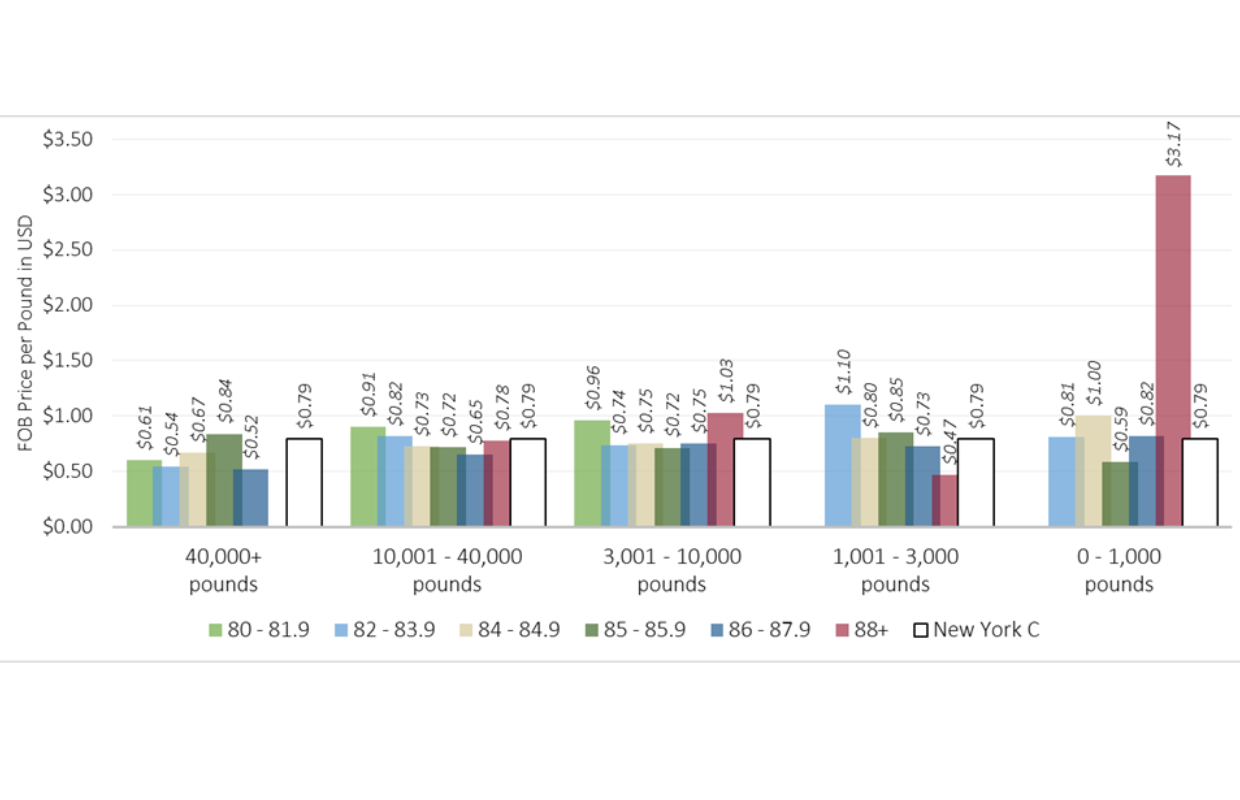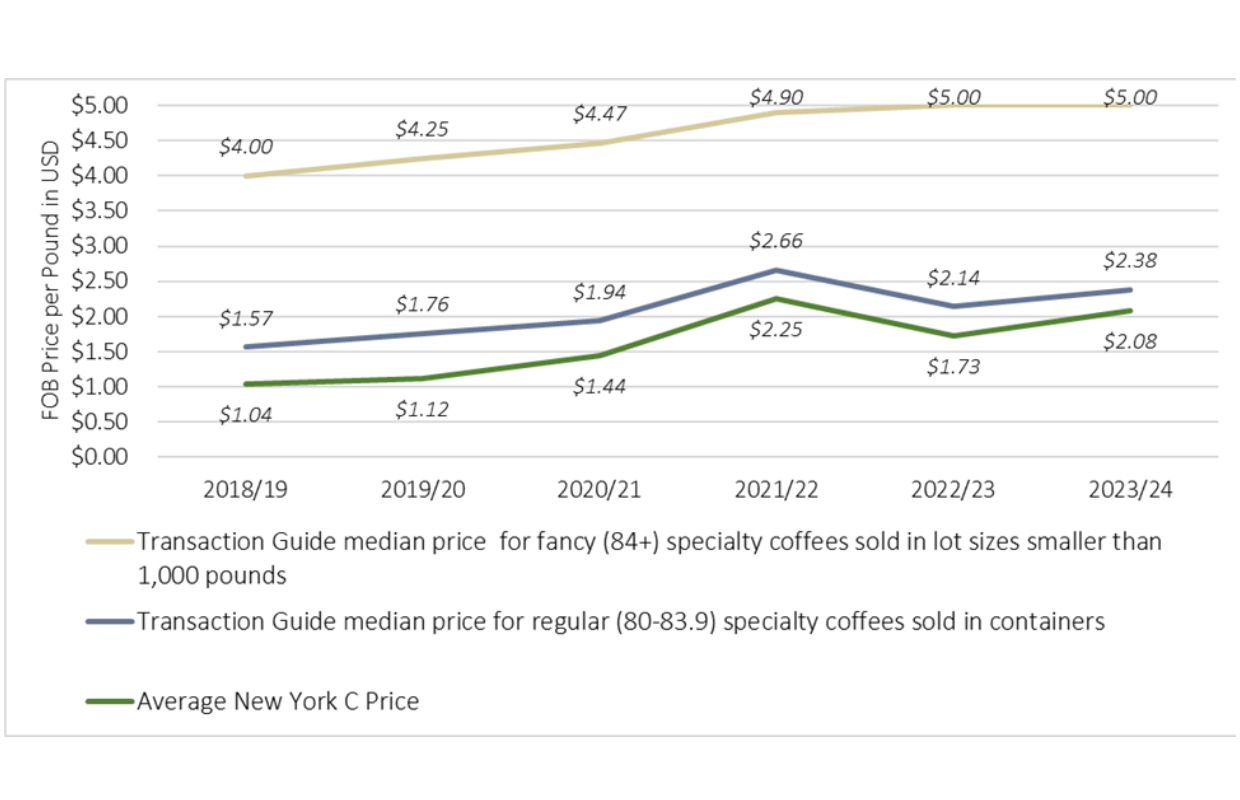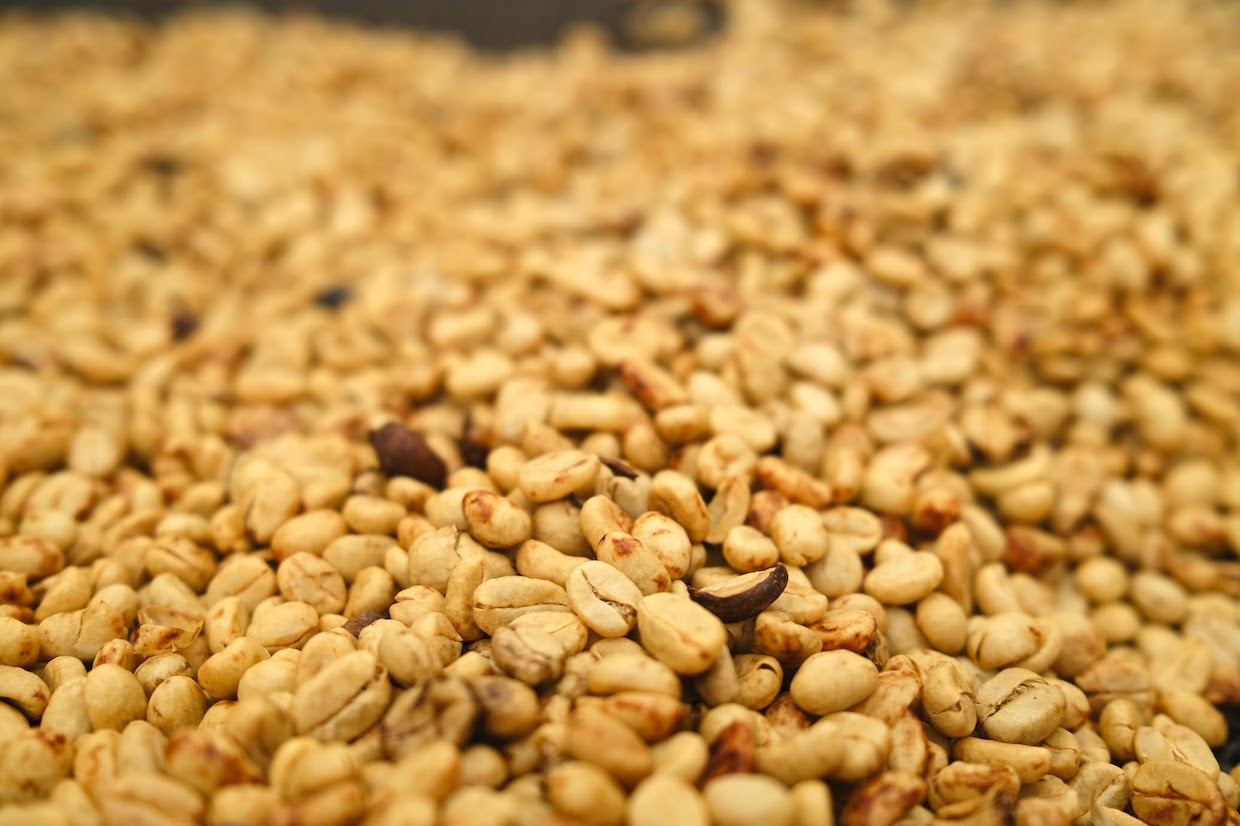The 2024 edition of the Specialty Coffee Transaction Guide recently came online, offering buyers and sellers of unroasted specialty coffee a data-backed resource for pricing discovery.
Data from 100,000+ Contracts
The 2024 Guide, available for free download here, draws upon data supplied by 123 companies from all over the world, summarizing more than 100,000 contracts representing 2 billion pounds of green specialty coffee.
Now in its sixth publication year, the guide highlights free-on-board (FOB) prices from the anonymized contract data — supplied by producer cooperatives, exporters, importers and roasters — providing a wealth of insight into how prices shake out for coffees based on factors such as quality score, lot size and country of origin.
The guide was created by researchers at Emory University’s Goizueta Business School, with participation from a growing roster of specialty coffee cooperatives, exporters, importers and roasters.

Period to Period Median Price Changes, 2018/19-2020/21 to 2021/22-2023/24. Image courtesy of the Specialty Coffee Transaction Guide.
This year, the guide stands in notable contrast to the world’s most commonly cited benchmark for coffee prices, the ICE arabica futures price, known as the “C price,” which has historically been characterized by extreme volatility and is subject to forces such as market speculation.
“We live in the belief that pricing for green specialty coffees could be as unrelated to the New York C price as are the associated retail prices,” SCTG Founder Peter Roberts told Daily Coffee News. “Every year, the Specialty Coffee Transaction Guide offers buyers and sellers an opportunity to think about, negotiate, and set prices for green specialty coffees using more relevant price benchmarks.”
Some 2024 SCTG Takeaways
The 2024 edition offers insight into two adjacent three-year market periods, beginning in 2018/19, and ending in 2023/24.
Over the most recent three harvest years, the median FOB price was $3.48, a $0.73 per pound increase over the median price in the previous three years.
Across the adjacent three-year periods, the median FOB price for “regular” specialty coffees (scored at 80-83.9 points) rose $0.70 per pound, from $2.23 to $2.93. For “fancy” specialty coffees (84+ points), the median price increased $0.75 from $3.43 to $4.18.
The complete guide has much more, catering to both sellers and buyers of specialty coffee of various lot sizes, of different geographies and of different quality scores, as outlined in standard contract language.

Green Coffee Reference Prices Over Six Harvest Years. Image courtesy of the Specialty Coffee Transaction Guide.
How the Guide is Used
“Producers and exporters we have spoken with generally use it as an alternative reference to the C price to begin conversations about pricing based on the specific kind of coffee they have, thinking about cup score, lot size, and origin,” 2024 SCTG research associate and Cheap Coffee Author Karl Wienhold told DCN. “Importers and roasters have told us they use it mainly to benchmark and give context to customers and other stakeholders when they share price information, recognizing a specific reference as a more relevant comparison than the C price.”
The organizers of the SCTG are planning to host their third annual U.S. “sensible pricing salon” — an event in which to share the guide and meet with current and potential data donors — in conjunction with April’s SCA Expo in Houston. The group is planning a similar event for the SCA’s World of Coffee trade show in Geneva, Switzerland, in June.
For some groups, like the Honduran Coffee Alliance, the guide has served as a reliable tool in annual price discovery.
“We were just getting our feet under us as the Specialty Coffee Transaction Guide was launched over six years ago,” the Honduran Coffee Alliance founder, Sean Warner, said in a statement shared with DCN. “Ever since we have leaned heavily on the guide to define our pricing. How do you decide how to define pricing as quality goes from 84 to 86 to 88? There really are no other resources available to guide decisions on specialty pricing.”
Comments? Questions? News to share? Contact DCN’s editors here. For all the latest coffee industry news, subscribe to the DCN newsletter.
Related Posts
Nick Brown
Nick Brown is the editor of Daily Coffee News by Roast Magazine.







Comment